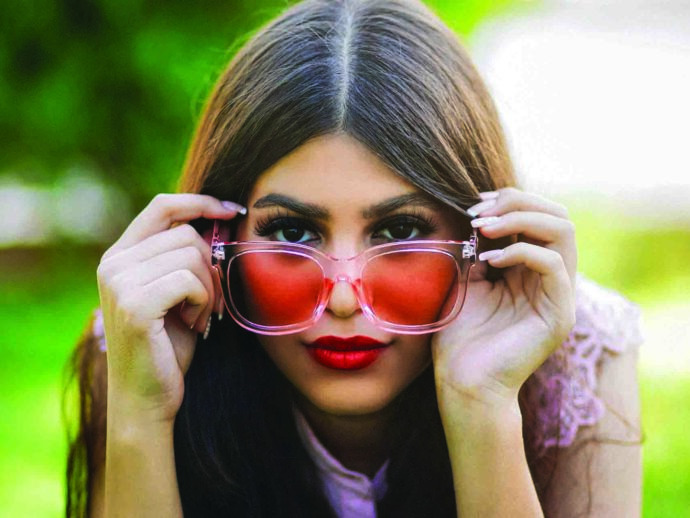
“The effects of colour fly under our awareness radar,” says professor Andrew Elliot, a lead researcher in the field of colour psychology. Whether you know it or not, you (and even some animals!) are affected by every colour you see, feel, and sense. Colour is thought to affect your cognitive ability, health, attitudes, and emotions—and even how your hot chocolate tastes.
The difference colour makes
Your senses perceive food in different ways, depending on the container’s colour. For example, strawberry mousse appears sweeter on a white plate compared to a black one. In a scientific study, hot chocolate tasted better to participants in an orange or cream-coloured cup than in a white or red one.
Colour also affects how you think, feel, and heal. Colour therapy is an ancient practice. Thousands of years ago, Egyptians and Greeks used coloured crystals, stones, minerals, salves, and dyes for healing and restoring balance. Timeless roots—and yet with an immediate, personal impact!
“You are a rainbow of colour,” says Alberta-based natural health consultant Ann Wakelin. “You vibrate with all the colours of the spectrum.”
Each colour has a wavelength, assigned by Isaac Newton in the 1660s. Colour therapists use these wavelengths for healing and balance. “Our bodies receive colour through the foods we eat and the clothes we wear,” says Wakelin. “Colour therapists aid this process by using specific colours of theatre gel in lamps. When it shines on us, we receive the colour as vibration or wavelength. This can promote emotional and physical healing.”
How colour affects you
In colour therapy, each colour is thought to have different properties that influence you physically, mentally, emotionally, and spiritually. According to Wakelin, “If you wear sky blue when speaking publicly, you’ll feel calmer and speak easier. Indigo helps with intuition and remembering dreams. Red energizes your senses. Violet offers tranquility. Orange promotes willpower, strength, happiness, and joy.”
Those who practice colour therapy believe that moderation is important; too much of one colour can cause imbalance. “Yellow stimulates brain neurons and helps digestion—but too much causes mental exhaustion,” Wakelin says. “Overdoing red may lead to anger.”
Both red and blue are thought to enhance cognitive performance. Researchers disagreed about which colour provided the biggest boost, until they discovered it depends on the task. A 2009 University of British Columbia study showed that red boosts performance on detail-oriented tasks (memory retrieval and proofreading) by 31 percent compared to blue.
Conversely, blue prompted twice as many creative outputs (thinking outside the box and brainstorming) as red. Most people associate blue with the openness, peace, and tranquility of the sky and ocean. These cues may help us feel safe to create and explore new ideas.
Colour therapy for people and animals
Scientific research on colour and wellness is in its infancy, but many attest to its power anecdotally.
“My most memorable experience with colour was when my husband burnt his hand with hot coals from the fireplace,” says Wakelin. “We used the colour turquoise in the colour lamp, and watched the huge blisters literally shrink before our eyes.”
Animals, too, may benefit from the effects of colour therapy. Wakelin’s friend’s horse tore his chest open when running through a wooden corral. “The veterinarian’s stitches didn’t hold,” says Wakelin. “We hung a lamp with a green colour gel in the upper corner of the horse’s stall and used a timer to turn it on and off at set times. The horse would come in from outside when the lamp was on and stand with the colour shining on its chest.” According to Wakelin, “His chest fully healed, without infection
or scarring.”
Not just a pair of “rose-coloured glasses”
Jackie Pearce, RMT, is a holistic practitioner; her greatest, most frequent successes are relief from anxiety, depression, chronic pain, hormonal imbalances, and insomnia. She also sells colour therapy glasses.
“They look like sunglasses, but are available in 10 colours,” Pearce says. She believes that “each colour can be used to bring physical, mental, emotional, and energetic balance.” She explains that she uses turquoise, for example, to help strengthen the immune system, treat glaucoma, and support the thymus and thyroid.
Pearce suggests indigo glasses for people with nerve pain, concussions, insomnia, extreme fears, and anxiety. Her best-selling colours are turquoise and orange. “People try on a few colours, often more for fun than anything else,” she says. She claims, though, that after a few colours, they begin to notice a shift in how they feel. She says, “This shows people it works, even if they don’t understand how or why.”
Pearce wishes more people knew how easy and accessible colour therapy can be. “Colour can enhance your life in so many ways,” she says. “From breath work and visualizations to the foods on your plate, the clothes in your closet, and the glasses on your nose—just a small amount of effort can bring big results in your physical, mental, and emotional well-being.
The power of colour to heal
To find out how your favourite colour can affect your health!
Laurie Pawlik-Kienlen, author of Growing Forward When You Can’t Go Back (Bethany House Publishers, 2019), will happily exchange her rose-coloured glasses for an orange pair. With a rose tint.
This article was originally published in the March 2020 issue of alive Canada, under the title “The Healing Power of Colour.”







